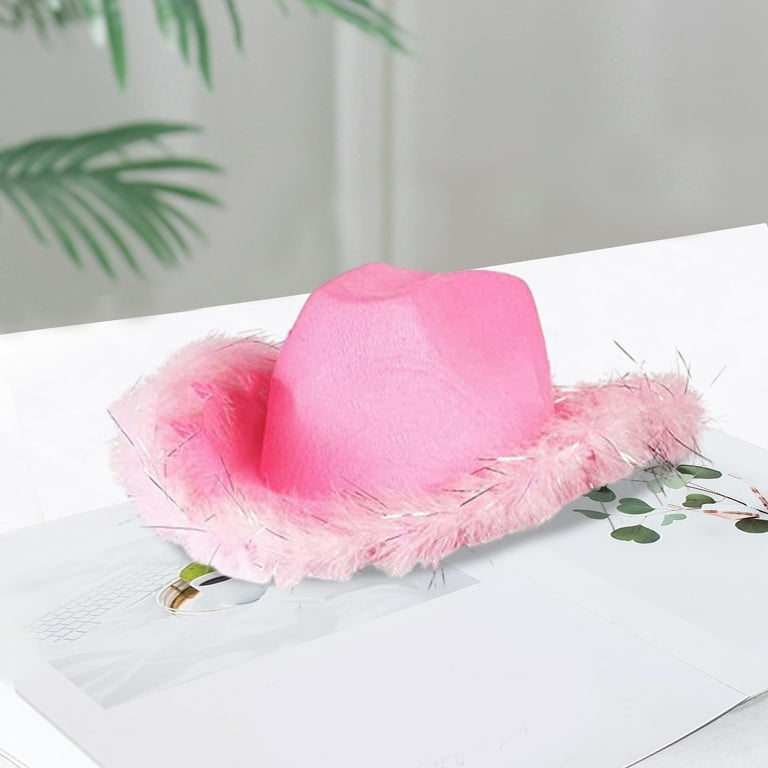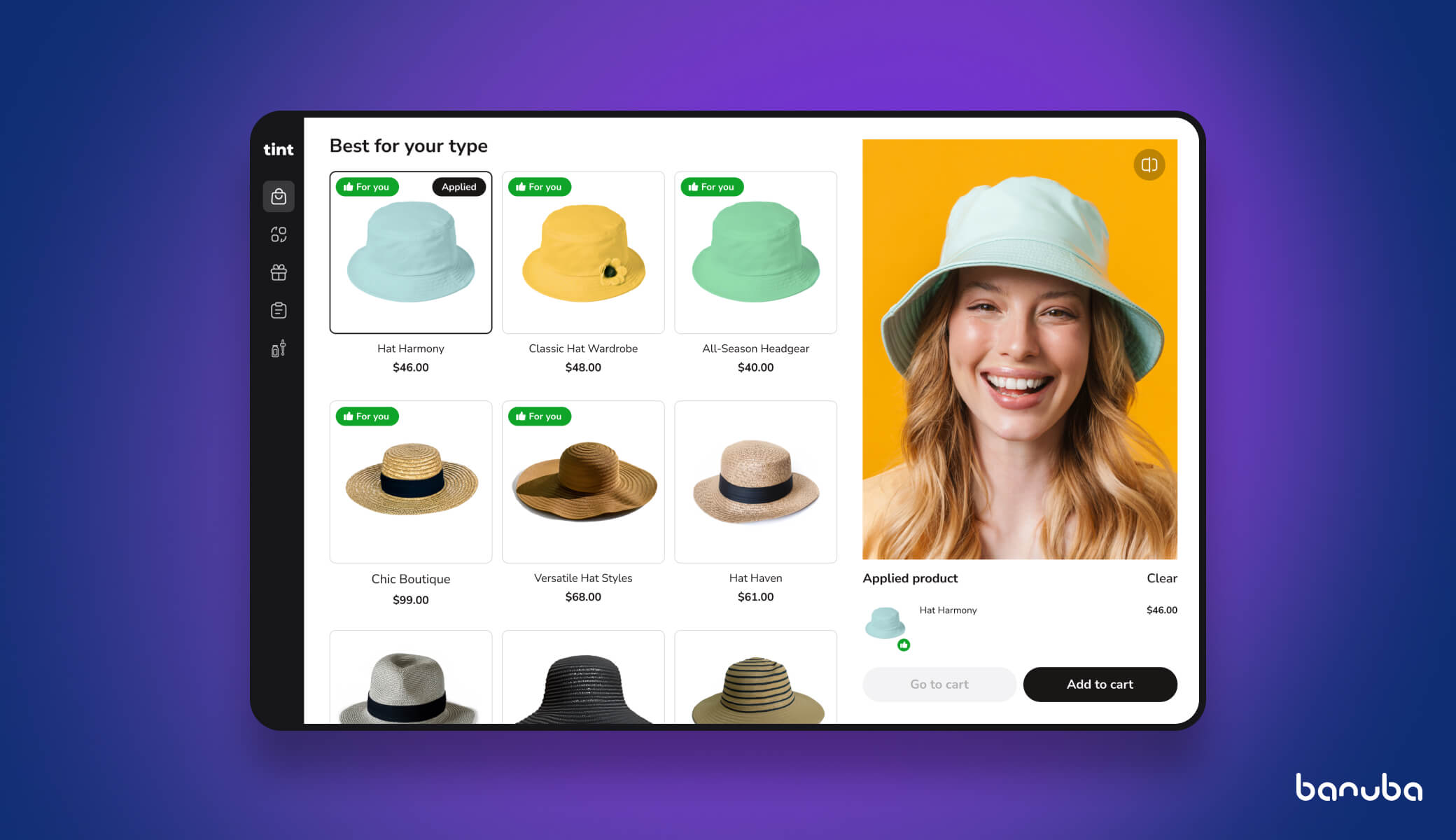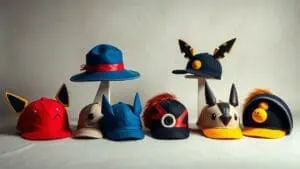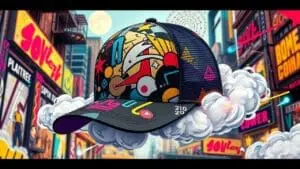According to a recent industry report, the global hat market is projected to reach $20.5 billion by 2025, growing at a CAGR of 4.2% from 2020 to 2025. This statistic highlights the increasing importance of hat design in the fashion industry. In this comprehensive guide, we’ll explore the intricate world of hat design, covering everything from basic anatomy to cutting-edge technologies shaping the future of headwear.
Hat design is a fascinating blend of aesthetic considerations and functional requirements, balancing style, comfort, and practicality. The process involves understanding materials, construction techniques, and market trends to create appealing and functional headwear. Modern hat design incorporates advanced technologies like 3D modeling, digital prototyping, and smart features to enhance both the design process and the final product.
When you design a hat, it’s essential to consider both form and function, ensuring that the hat not only looks good but also serves its intended purpose effectively.
Table of Contents
- Understanding Hat Anatomy
- Crown Construction
- Brim Fundamentals
- Sweatband and Lining
- Material Selection and Innovation
- Traditional Materials
- Cutting-Edge Fabrics
- Design Process and Tools
- Customization and Personalization
- Market Trends and Consumer Preferences
- Ergonomics and Fit
- Sustainability in Hat Production
- Technology Integration
- Cultural Influences and Global Design
- Conclusion: The Future of Hat Design
- Key Learnings Recap
TL;DR
- Hat design in 2024 combines traditional craftsmanship with advanced technologies
- Understanding hat anatomy is crucial for creating functional and stylish headwear
- Material innovation focuses on sustainability and performance
- Digital tools and 3D printing revolutionize the design and prototyping process
- Customization and personalization are key trends driving the industry
- Ergonomics and proper fit are increasingly important in hat design
- Technology integration is opening new possibilities for smart hat features
- Cultural influences are shaping global hat design trends
Understanding Hat Anatomy
To create effective hat designs, we must first grasp the fundamental components that make up a hat’s structure. This knowledge forms the foundation for developing headwear that is both functional and visually appealing. Let’s break down the key elements of hat anatomy.
Hat anatomy consists of three main components: the crown, brim, and internal elements like the sweatband and lining. Each component serves specific purposes related to fit, comfort, and style. Understanding these elements allows designers to manipulate them for various hat styles and functions.
Mastering hat design requires a deep understanding of each component’s role in the overall structure and aesthetics of the headwear.
Crown Construction
The crown is the top portion of the hat that covers the head. Its shape and dimensions play a crucial role in determining the overall style and fit of the hat. We’ll examine two key aspects of crown construction: height and shape.
Crown construction involves considering factors such as head shape, hat style, and intended use. The crown’s structure can be reinforced using materials like buckram or interfacing to maintain its shape. Different crown styles include dome, telescope, center dent, and pinched front, each creating a distinct look.
Crown Height
The height of the crown significantly impacts how the hat sits on the head and can dramatically alter its appearance and intended use. We’ll explore how crown height affects hat design and functionality.
Crown height is typically measured from the base of the crown to its highest point. Taller crowns can create a more formal or dramatic look, while shorter crowns tend to be more casual. The ideal crown height varies depending on face shape, personal style, and the hat’s purpose.
Crown Shape
Various crown shapes exist, from domed to flat-topped, each lending a distinct character to the hat design. We’ll discuss how different crown shapes influence the overall aesthetic and functionality of a hat.
Common crown shapes include round, oval, square, and teardrop. The choice of crown shape can complement or contrast with facial features. Some hat styles are defined by their specific crown shapes, such as the fedora’s center dent or the bowler’s rounded dome.
Brim Fundamentals
The brim is the projecting edge of the hat, serving both functional and stylistic purposes. We’ll examine two critical aspects of brim design: width and stiffness.
Brim design affects sun protection, rain deflection, and the hat’s overall silhouette. Brims can be shaped in various ways, such as flat, curved, or rolled. The interaction between the brim and crown shapes is crucial for creating a cohesive hat design.
Brim Width
The width of the brim influences sun protection and the overall hat silhouette. We’ll explore how brim width affects hat design and functionality.
Brim width is measured from the base of the crown to the outer edge of the brim. Wider brims offer more sun protection and a more dramatic look, while narrower brims are often more versatile and urban-friendly. Brim width can vary around the hat’s circumference, creating asymmetrical designs.
Brim Stiffness
The rigidity of the brim affects its ability to hold shape and resist environmental factors. We’ll discuss how brim stiffness impacts hat design and performance.
Brim stiffness can be achieved through material choice or additional reinforcement. Stiffer brims maintain their shape better but may be less comfortable or packable. Flexible brims allow for customization and easier storage but may require more frequent reshaping.
Sweatband and Lining
These internal components contribute to comfort and moisture management. We’ll examine how sweatbands and linings are integrated into hat design for improved functionality.
Sweatbands are typically made from absorbent materials like cotton or leather to manage perspiration. Linings can provide additional insulation, comfort, and protection for the hat’s internal structure. The choice of sweatband and lining materials can significantly impact the hat’s overall comfort and durability.
According to CustomInk, over 50 high-quality brands are available for hat customization, showcasing the diverse range of options in the market. This statistic highlights the importance of understanding internal components when selecting or designing hats. CustomInk Hat Customization Options

Source: hatmakers.org
Material Selection and Innovation
The choice of materials is crucial in hat design, impacting durability, comfort, and style. In 2024, we’re exploring innovative fabrics and sustainable options to meet evolving consumer demands and environmental concerns.
Material selection involves considering factors such as weather resistance, breathability, and aesthetic appeal. Innovations in textile technology are expanding the range of available materials for hat design. Sustainable and eco-friendly materials are becoming increasingly important in the hat industry.
When you design a hat, selecting the right materials is crucial for achieving the desired look and performance.
Traditional Materials
Classic hat-making materials continue to play a significant role in contemporary designs. We’ll examine two timeless options: felt and wool, and straw and natural fibers.
Traditional materials often offer proven durability and timeless aesthetics. The processing and treatment of these materials can significantly affect their properties and appearance. Combining traditional materials with modern manufacturing techniques can yield innovative results.
Felt and Wool
These time-honored materials offer warmth and structure, ideal for cooler climates and formal styles. We’ll explore the properties and applications of felt and wool in hat design.
Felt is created by matting, condensing, and pressing fibers together, resulting in a dense, durable material. Wool felt is naturally water-resistant and insulating, making it suitable for cold-weather hats. Different grades of wool can be used to achieve varying levels of softness and durability.
Straw and Natural Fibers
Lightweight and breathable, these materials are perfect for summer hats and casual wear. We’ll discuss the characteristics and uses of straw and other natural fibers in hat design.
Straw hats can be made from various plant fibers, including wheat straw, raffia, and palm leaves. Natural fibers offer excellent ventilation and are often biodegradable, aligning with sustainability goals. The weave pattern and density of straw hats can affect their durability and sun protection properties.
Cutting-Edge Fabrics
Advancements in textile technology are revolutionizing hat design possibilities. We’ll explore two categories of innovative materials: performance synthetics and eco-friendly options.
Cutting-edge fabrics often offer enhanced performance characteristics compared to traditional materials. The development of new materials can lead to novel hat designs and functionalities. Balancing innovation with practicality and cost-effectiveness is crucial in material selection.
Performance Synthetics
Moisture-wicking, UV-resistant fabrics enhance functionality for active lifestyles. We’ll examine how performance synthetics are changing the landscape of hat design.
Performance synthetics often incorporate technologies like moisture management and temperature regulation. These materials can be engineered to have specific properties, such as stretch, water repellency, or antimicrobial qualities. The durability and easy care of many synthetic fabrics make them popular for everyday and athletic hats.
Eco-Friendly Options
Sustainable materials like recycled plastics and organic fibers are gaining popularity among environmentally conscious consumers. We’ll explore the growing role of eco-friendly materials in hat design.
Eco-friendly materials can include recycled synthetics, organic natural fibers, or innovative plant-based alternatives. The production processes for these materials often have a lower environmental impact compared to traditional methods. Certifications and standards help verify the sustainability claims of eco-friendly materials.
The “Travaux En Cours” hat collection, featuring woven paper designs, has gained popularity for its durability and style, indicating a shift towards innovative materials in hat design. This collection demonstrates the potential for unconventional materials in creating sustainable and fashionable headwear. Travaux En Cours Hat Collection (Source: Printmag.com)

Source: sustainablefashion.com
Design Process and Tools
The hat design process has evolved with technology, blending traditional craftsmanship with modern techniques. We’ll explore the digital tools and processes shaping hat design in 2024.
Modern hat design often begins with digital sketching and 3D modeling before physical prototyping. Computer-aided design (CAD) software allows for precise adjustments and iterations in the design process. Digital tools can streamline production processes and improve consistency in manufacturing.
The hat design process has been revolutionized by digital tools, allowing for more efficient and precise creation of new styles.
Digital Design Software
CAD programs tailored for hat design allow for precise modeling and rapid prototyping. We’ll examine how digital design software is transforming the hat creation process.
Specialized hat design software can include features for pattern creation, material simulation, and size grading. 3D modeling allows designers to visualize and modify hat designs from all angles before physical production. Digital design tools can integrate with manufacturing systems for seamless production workflows.
3D Printing in Prototyping
Additive manufacturing enables quick iteration and testing of complex hat designs. We’ll explore how 3D printing is revolutionizing the prototyping phase of hat design.
3D printing can be used to create hat blocks, accessories, or even entire hat prototypes. This technology allows for rapid testing of new shapes and structures that may be difficult to achieve with traditional methods. 3D-printed components can be integrated into traditional hat-making processes for hybrid manufacturing approaches.
Virtual Try-On Technology
Augmented reality applications allow customers to visualize hats on themselves before purchase. We’ll discuss how virtual try-on technology is changing the hat shopping experience.
Virtual try-on uses facial recognition and 3D rendering to superimpose hat designs onto a customer’s image or video. This technology can improve online shopping experiences by reducing uncertainty about fit and style. Advanced virtual try-on systems may incorporate physics simulations to show how a hat might move or sit realistically.

Source: augmentedfashion.com
Customization and Personalization
The trend towards individualized products has significantly impacted hat design strategies. We’ll explore how customization and personalization are shaping the hat industry in 2024.
Customization can range from simple color choices to fully bespoke hat designs. Digital technologies enable more efficient and cost-effective customization processes. Personalization options can increase customer engagement and satisfaction with hat purchases.
Create your unique style with our custom hats delivered straight to your doorstep.
On-Demand Manufacturing
Technologies enabling small-batch production cater to the demand for unique, personalized hats. We’ll examine how on-demand manufacturing is changing the hat production landscape.
On-demand manufacturing reduces inventory costs and minimizes waste in hat production. Digital printing and embroidery technologies allow for quick customization of hat designs. This approach enables brands to offer a wider range of designs without the risk of overproduction.
According to Spreadshirt.com, the minimum order value for custom hats is $25, indicating a trend towards accessible personalization. This low entry point demonstrates how on-demand manufacturing has made customized hats more attainable for consumers. Spreadshirt Custom Hat Pricing
Embroidery and Printing Advancements
High-precision machines allow for intricate customization options, from monograms to full-color designs. We’ll explore the latest advancements in hat embellishment technologies.
Modern embroidery machines can produce complex designs with multiple colors and textures. Direct-to-garment (DTG) printing enables full-color, photorealistic designs on hat panels. Heat transfer and sublimation printing offer additional options for customizing hat designs.
Printful reports that digitalization fees are required for creating embroidery files, highlighting the technical aspects of modern hat customization. This fee covers the process of converting designs into embroidery-ready files, ensuring high-quality results. Printful Embroidery Services
Market Trends and Consumer Preferences
Understanding current fashion trends and consumer behavior is crucial for successful hat design in 2024. We’ll examine three key trends shaping the hat market: athleisure influence, vintage revival, and multifunctional designs.
Market trends in hat design are influenced by broader fashion movements, lifestyle changes, and cultural shifts. Consumer preferences can vary significantly across different demographics and regions. Analyzing sales data and social media trends can provide insights into emerging hat design preferences.
Athleisure Influence
The blending of athletic and leisure wear continues to shape hat designs for everyday use. We’ll explore how the athleisure trend is impacting hat design and functionality.
Athleisure-inspired hats often incorporate performance fabrics and moisture-wicking technologies. Designs tend to focus on versatility, allowing hats to transition from workout to casual wear. Branding and logo placement play a significant role in athleisure hat designs.
Vintage Revival
Classic hat styles are seeing a resurgence, with modern twists on traditional designs. We’ll examine how designers are reimagining vintage hat styles for contemporary consumers.
Vintage revival often involves updating classic silhouettes with modern materials or manufacturing techniques. Designers may incorporate elements of nostalgia while ensuring the hats meet current functional needs. Research into historical hat-making techniques can inform the authentic recreation of vintage styles.
Multifunctional “`html Designs
Hats that serve multiple purposes, such as those with built-in technology or convertible features, are gaining traction. We’ll discuss the growing trend of multifunctional hat designs.
Multifunctional hats may include features like removable brims, integrated headphones, or UV sensors. Designers must balance added functionality with comfort and aesthetic appeal. The integration of technology into hats requires consideration of power sources, durability, and user interface design.
The film “Wicked” is expected to be a strong contender in costume design categories at upcoming award ceremonies, potentially influencing hat design trends in the entertainment industry. This highlights how media and pop culture can impact hat design trends and consumer preferences. Wicked Movie Costume Design (Source: Goldderby.com)

Source: innovativewearables.com
Ergonomics and Fit
In 2024, hat design places increased emphasis on ergonomics and proper fit to ensure comfort and functionality for diverse head shapes and sizes. We’ll explore how designers are addressing these challenges.
Ergonomic hat design considers factors such as weight distribution, pressure points, and ventilation. Advances in anthropometric data collection are informing more inclusive sizing systems. The goal of ergonomic design is to create hats that feel comfortable for extended wear periods.
3D Head Scanning
Advanced scanning technology allows for precise measurements and custom-fitted hats. We’ll examine how 3D head scanning is revolutionizing hat fitting and design.
3D scanning can capture detailed measurements of an individual’s head shape and size. This data can be used to create custom hat blocks or adjust existing designs for a better fit. Integration of 3D scanning with CAD software allows for rapid customization of hat designs.
Data-Driven Sizing
Analysis of head shape data informs the development of more inclusive sizing ranges. We’ll explore how data-driven approaches are improving hat sizing systems.
Large-scale data collection can reveal patterns in head shapes across different populations. Statistical analysis of this data can lead to the creation of more representative size ranges. Machine learning algorithms can be used to predict optimal hat sizes based on key measurements.
Adjustable Features
Innovative adjustment mechanisms provide versatility in fit without compromising style. We’ll discuss various approaches to creating adjustable hat designs.
Adjustable features can include elastic bands, drawstrings, or ratchet systems. The challenge lies in integrating these features seamlessly into the hat’s design. Durability and ease of use are key considerations in designing adjustable hat components.

Source: hattechblog.com
Sustainability in Hat Production
Environmental concerns are driving changes in hat design and manufacturing processes. We’ll explore how the hat industry is addressing sustainability challenges.
Sustainable hat production involves considerations throughout the entire lifecycle of the product. Designers are exploring ways to reduce waste, energy consumption, and water usage in hat manufacturing. Transparency in supply chains and ethical production practices are becoming increasingly important to consumers.
Circular Design Principles
Designers are incorporating recyclability and end-of-life considerations into hat creation. We’ll examine how circular design principles are being applied to hat production.
Circular design aims to create hats that can be easily disassembled and recycled at the end of their life. This approach may involve using mono-materials or designing for easy separation of components. Some companies are implementing take-back programs to ensure proper recycling of their products.
Waste Reduction Techniques
Zero-waste pattern cutting and upcycling of materials are becoming standard practices. We’ll discuss innovative approaches to reducing waste in hat production.
Zero-waste pattern cutting involves designing patterns that utilize the entire piece of fabric. Upcycling can involve repurposing discarded materials or transforming unsold inventory into new designs. Digital sampling and virtual prototyping can reduce material waste in the development process.

Source: sustainablefashiondesign.orgTechnology Integration
The fusion of technology with hat design is opening new possibilities for functionality and user experience. We’ll explore how technology is being integrated into modern hat designs.
Technology integration can enhance the functionality, comfort, and interactivity of hats. Designers must consider factors such as power sources, durability, and user interface when incorporating technology. The challenge lies in seamlessly blending technology with traditional hat aesthetics and comfort.
Smart Hat Features
Integration of electronics for health monitoring, audio capabilities, or environmental sensing is becoming more common. We’ll examine various smart features being incorporated into hat designs.
Smart hats may include sensors for tracking UV exposure, heart rate, or body temperature. Audio integration can involve bone conduction technology or discreet speaker systems. Some smart hats incorporate solar panels or kinetic energy harvesting for power generation.
Augmented Reality Design Tools
AR applications assist designers in visualizing and modifying hat designs in real-time. We’ll explore how augmented reality is transforming the hat design process.
AR tools can allow designers to visualize different materials, colors, and embellishments on virtual hat models. These applications can facilitate collaboration between designers and clients, enabling real-time adjustments. AR can also be used in retail settings to help customers visualize customization options.

Source: arfashiontech.com
Cultural Influences and Global Design
Hat design in 2024 reflects a growing appreciation for diverse cultural aesthetics and traditional craftsmanship. We’ll examine how global influences are shaping contemporary hat design.
Cultural influences can inspire new silhouettes, materials, and embellishment techniques in hat design. Designers must navigate cultural appreciation versus appropriation when drawing inspiration from diverse sources. Global design trends often reflect a fusion of traditional elements with modern aesthetics and technologies.
Fusion Styles
Blending of cultural design elements creates unique, globally-inspired hat concepts. We’ll explore how designers are creating fusion styles that appeal to a diverse, international market.
Fusion styles may combine traditional hat forms with contemporary materials or manufacturing techniques. These designs often require a deep understanding of the cultural significance of various hat elements. Successful fusion styles balance respect for tradition with innovation and global appeal.
Artisanal Techniques in Modern Design
Incorporation of traditional handcrafting methods adds value and uniqueness to contemporary hat designs. We’ll discuss how artisanal techniques are being preserved and reimagined in modern hat production.
Artisanal techniques can include hand-blocking, hand-stitching, or traditional embroidery methods. Designers may collaborate with skilled artisans to incorporate these techniques into their collections. The challenge lies in scaling artisanal production while maintaining quality and authenticity.

Source: traditionalcrafts.org
Conclusion: The Future of Hat Design
As we’ve explored throughout this guide, hat design in 2024 is a dynamic field that combines traditional craftsmanship with cutting-edge technology and innovative materials. The industry continues to evolve, driven by consumer demands for personalization, sustainability, and functionality.
At SignaturePeak, we understand the complexities of modern hat design and strive to offer solutions that meet the diverse needs of designers and consumers alike. Our range of customization options, commitment to quality materials, and adoption of sustainable practices position us at the forefront of the hat industry.
Whether you’re looking to create a classic fedora with a modern twist or design a tech-integrated cap for active lifestyles, SignaturePeak has the tools and expertise to bring your vision to life. We invite you to explore our customization platform and join us in shaping the future of hat design.
Ready to start your hat design journey? Visit our website to learn more about our services and begin creating your unique headwear today.
Key Learnings Recap
Let’s review the essential takeaways from our exploration of hat design in 2024:
- Understanding hat anatomy is fundamental to creating functional and stylish designs
- Material innovation focuses on both performance and sustainability
- Digital tools and technologies are revolutionizing the design and manufacturing process
- Customization and personalization are driving consumer preferences
- Ergonomics and proper fit are crucial considerations in modern hat design
- Sustainability is becoming a core principle in hat production
- Technology integration is opening new possibilities for smart hat features
- Cultural influences are shaping global hat design trends
The future of hat design lies in the balance between tradition and innovation. Successful hat designers will need to stay informed about technological advancements, material sciences, and changing consumer preferences. Collaboration between designers, engineers, and artisans will be key to pushing the boundaries of hat design.
As we look to the future, the ability to design a hat that meets both aesthetic and functional requirements will be more important than ever.
Explore our wide range of custom hats, each crafted to fit your style needs.









Leave a reply